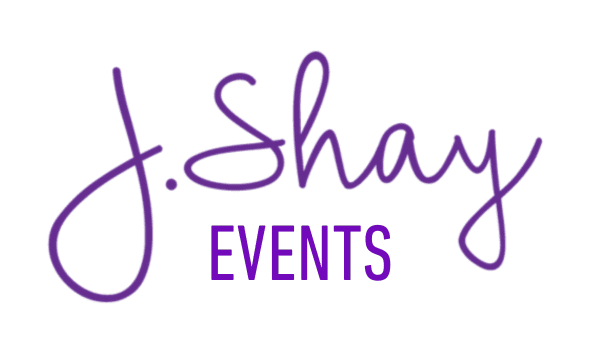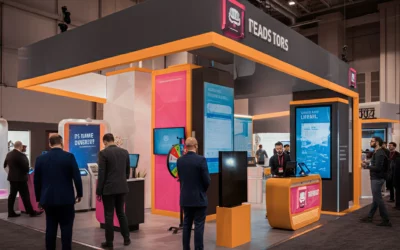Introduction
Most event planners focus on the logistical and creative aspects of planning corporate events. They don’t think strategically. But it is through strategic event planning, or planning with Return On Investment (ROI) in mind, that planners can show stakeholders the true value of what they do.
Every event has a purpose. Every single one. But many event planners don’t recognize that their efforts have a real, fundamental purpose, and that purpose goes beyond booking flights and ordering the right vegetarian meals.
When events are planned from a strategic point of view, the results are, without question, a major contributor to an organization’s bottom line. But if you neglect to adopt a strategic mindset, and should your organization’s corporate performance decline, you can be sure that your event and meetings budget will be the first to be cut.
The 3 Biggest Challenges Event Planners Face
Challenge Number 1: Being Reactive Instead of Proactive
Many events are planned and hosted simply because organizations feel they are required to do so. They feel they must have that annual sales kickoff event. Or they partake in an industry trade show because all of their competitors are going.
The planner is given a budget and a range of dates and little else.
Now the planner is in a reactive state. He or she will try and design a kickoff event that everyone enjoys. Much thought will go into choosing the right motivational theme and caterer and entertainment.
But no thought will really go into “what is the PURPOSE of this event?” That is a proactive way of thinking.
That is thinking with ROI in mind.
Challenge Number 2: Lack of Stakeholder Communication
In order to work proactively and plan from the perspective of purpose and ROI, you need to be able to have dialogue with top stakeholders. You need to be “in the loop.”
But this generally doesn’t happen. Again, you’re thrown an event, you’re given the date and budget, but there is never really a sense of a working relationship or an open channel of communication with those stakeholders who KNOW the goals and milestones they need to hit.
Challenge Number 3: A Lack of Strategy
As an event professional, it can be hard to have a uniform process or set of guidelines for planning and executing an event for your business. But as Christy Lamagna says, ”Until we as event professionals can incorporate Strategy into our event processes, we’ll never have a seat at the big table.”
What happens when strategy is left out of the event planning process?
Planners typically find themselves scrambling and putting out fires. When planners are solely focused on logistics and operations, the result is often chaos.
But with a top-down approach, planners are in control.
An effective event strategy will produce a significantly higher ROI, and an increase in the overall mood, culture, and career trajectory.
IRF’s Convincing ROI Case Study
Before getting into the process of event strategy, here is a case study from the Incentive Research Foundation that shows the effectiveness and profitability of strategically planned events.
A well-known United States based Fortune 500 computer manufacturer faced increased complexity and competition in its marketplace.
There was more foreign competition, less people were buying, there were numerous technology disruptions in the industry, and even their top salespeople were having a rough time pushing products.
To make matters worse, their top sales managers were being courted by competitors.
The company desired a strong incentive program that would meet three different objectives:
- Increase sales by 15% over the previous year
- Increase the customer base by not less than 25%
- Maintain total SG&A expenses at not more than 26% of projected sales
The event planners got to work to design an incentive program from a strategic point of view. How could they go beyond choosing a popular global hotspot and instead focus their efforts on helping their organization meet these very specific goals?
The answer was to design a program that motivated all sales personnel, including additional incentives for the top producers to reach even higher levels of performance.
The Rules Structure that was developed also provided the company an opportunity to exceed their sales related objectives.
And finally, the awards were selected based on the demographic profile of both the Target Sales Representative and the Top Producers.
So what were the results? Well, they were pretty astounding:
- Total sales increased by 25%, 10% over the projected 15% increase
- The company increased its customer base by 35%, more than their 25% goal
- SG&A Expenses were maintained at 6% less than projection
You can download the full case study here.
So you can see that planning a corporate event, and it could be an incentive program or any other type of corporate event, is going to get the best results when you have ROI at the forefront of your mind.
Three Adjustments for Better Event Outcomes
Here are three adjustments event planners can make to begin seeing better event outcomes:
Adjustment Number 1: Shifting your mindset from tactical to strategic
It’s important that you begin to understand that every event matters. To do this you must think in terms of ROI, not cost center.
This involves the following:
- Developing and sticking to an event strategy
You will need to identify your goal. What is it you are trying to do?
Remember the case study I shared. They had specific goals they were trying to meet and their incentive travel program was designed around those goals.
So think about what your organization is trying to accomplish. Do you want to attract new employees? Build brand awareness? Generate qualified leads?
- Set Measurable Objectives
Once you have your primary goal, you’ll want to outline the specific steps you and your team will need to take to achieve your desired outcome.
So for instance, if your primary goal is to build brand awareness, you will want to measure things like how many people will be attending your event, as well as how much press and social media coverage it will get.
Your team may decide that for successful ROI, you’ll need to attract 1,500 attendees, attain 1,000 new social media followers and secure 10 press mentions.
The thing to really understand about tracking ROI is that everything, EVERYTHING can be quantified. You simply have to spend a little time deciding on goals and steps you will take to reach them.
- Gather Data
How will you track your event’s performance? How will you gather the data?
The event technology software you use is a tool that can help you gather an incredible amount of insight such as number of tickets sold, revenue from sales, the number of no-shows and more.
You have other tools at your disposal as well. Online surveys can help you measure attendee satisfaction while a CRM like Salesforce can track leads generated from your event.
Adjustment Number 2: Begin measuring your results and document it heavily
Once you’ve gathered this data, you must analyze it so you can fully understand your event’s ROI.
In IRF’s case study, the fortune 500 company had a goal of increasing their sales by 15%. The results of their incentive travel program actually caused an increase of 25%, which was 10% over their initial goal.
Those event planners have solid proof in their hands that their efforts directly impacted the company’s bottom line. And that leads nicely into the third adjustment…
Adjustment Number 3: Present positive findings to the stakeholders to get more resources
As soon as you can walk into your CEO’s office with data in hand, and prove that your efforts have helped the company reach its objectives, your team will grow, you’ll get more resources and a bigger budget and be handed more responsibility.
But all of these positives are a result of the event planner shifting their mindset. That needs to happen first.
Conclusion
In order to be effective and fully successful, corporate events must be planned on a solid foundation of return on investment (ROI).
The days of planning without purpose are over. Today’s planners must think strategically ahead of time, loop the right stakeholders, identify what the real goals are, and then track how they’re going to reach them.
They’ve got to stop seeing themselves as reactive members of their organization and instead become proactive members. When they do this, their team will grow and they’ll be handed more resources and a bigger budget.
You might also like…
Top 10 U.S. Meeting Destinations for 2026
Successful corporate events don’t just happen — they’re built on smart decisions, starting with...
The Trade Show Prep Guide: Boost ROI Like a Pro
Trade shows are a powerful way to elevate your brand's visibility, connect with potential...
President’s Club 2026 Ultimate Gift Guide
Luxury, Personalization, and Impact for Unforgettable Incentive Travel President’s Club isn’t just...
The Role of Corporate Event Managers is Evolving
Corporate events aren’t what they used to be. Gone are the days of basic cocktail hours and...
Revitalizing Sales Kickoffs: Strategic Insights for 2026
Gone are the days when Sales Kickoffs (SKOs) were just annual corporate pep talks. Today's SKOs...
Planning for Performance: The 2026 Guide to Mastering Incentive Travel
Here's Why Incentive Travel is Your Secret Weapon in 2026... Gone are the days when incentive...







